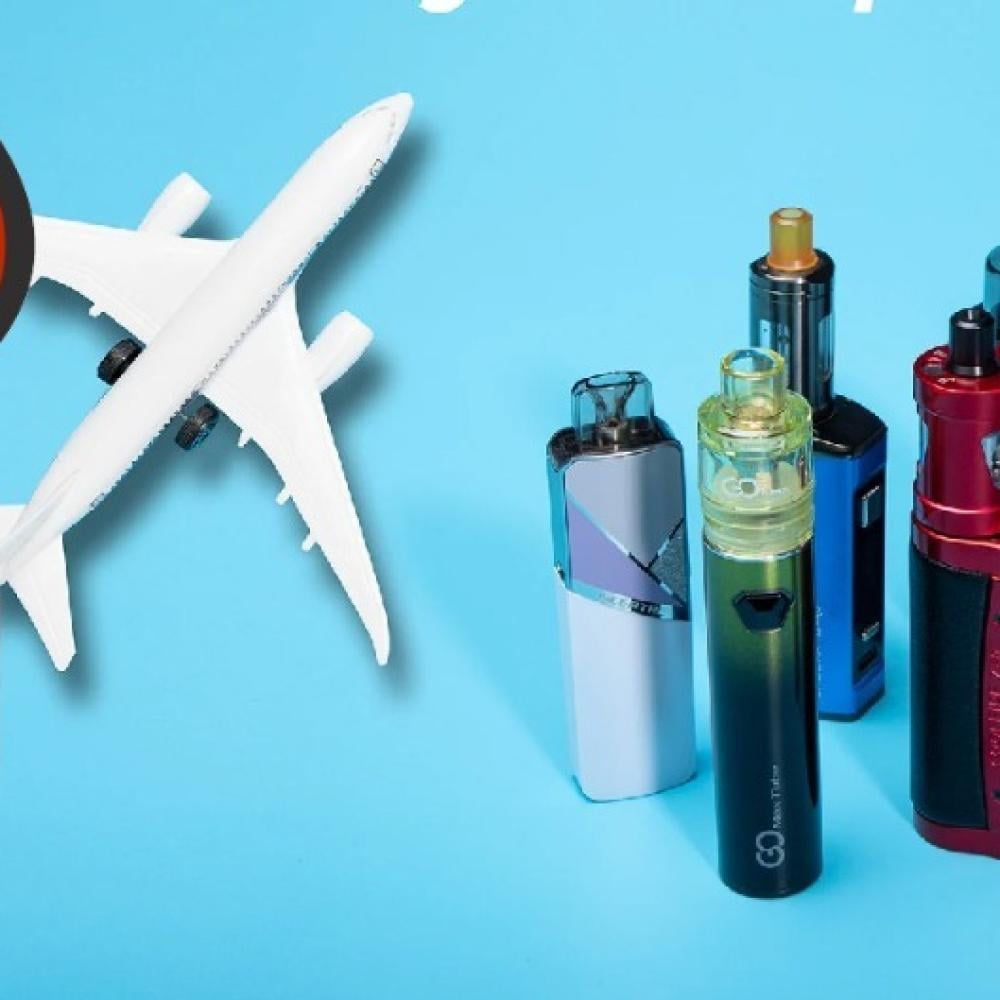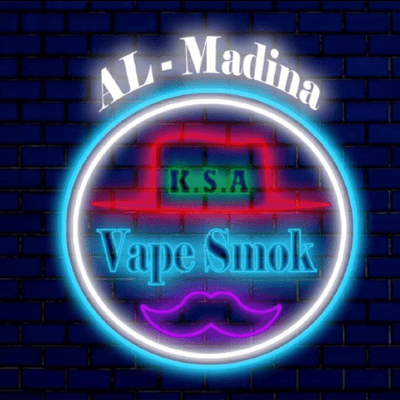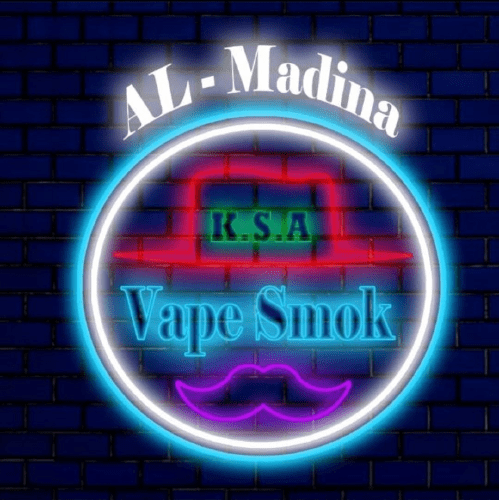

Vaping Regulations at Airports
Understanding the Legal Framework
As the popularity of vaping continues to surge, the legal landscape surrounding its use in public places—airports included—has become quite complex. Unlike smoking, which is typically subject to uniform regulations, vaping laws can differ significantly from one location to another. These distinctions are often shaped by local, state, and national laws, as well as the policies of individual airports and airlines.
In many countries, airports have the authority to establish their own rules regarding vaping, leading to a patchwork of regulations. For instance, while some airports might allow vaping in designated areas, others may impose complete bans within terminal confines. Additionally, some jurisdictions have specific laws that echo their stance on smoking, automatically extending these regulations to vaping products.
Travelers must be aware of the following key points related to the legal framework:
- Local Legislation: Many cities have laws that restrict vaping in the same places where smoking is prohibited.
- Airport Policies: Each airport may have different zones where vaping is permitted or banned.
- Airline Rules: Airlines may enforce their own regulations that significantly affect what happens if you put a vape in a carry-on.
Understanding this legal framework is crucial for ensuring compliance and avoiding surprises during your travels.
Implications for Travelers
Navigating the regulations surrounding vaping at airports can feel overwhelming. The consequences of non-compliance can range from minor inconveniences to serious penalties, causing anxiety for many travelers. Here are some implications that every vaping traveler should keep in mind:
- Confiscation of Devices: Carrying your vape device into an area where it's prohibited can lead to confiscation. Being informed is critical to prevent the loss of your device and eliquids.
- Fines and Legal Issues: In some regions, violating vaping regulations could result in hefty fines or even legal action. For instance, travelers who mistakenly use a vape in a non-designated zone may encounter hefty penalties, making it essential to stay updated on the rules.
- Travel Delays: Interactions with airport security may take longer if you encounter questioning about your vaping device. This can lead to additional stress and potentially delay your flight.
- Layover Challenges: If you have a long layover at an airport with strict vaping rules, you may find yourself in a tricky situation, particularly if your next destination has different regulations.
By understanding the legal framework and its implications, vaping travelers can make informed choices and enjoy a smoother travel experience. Preparing adequately and remaining compliant can significantly reduce anxiety and enhance the overall enjoyment of travel, allowing travelers to focus on the adventure ahead rather than potential restrictions.
Global Airport Policies on Vaping
Comparison of Vaping Regulations Worldwide
Traveling with a vape can be a bit of a balancing act, especially when it comes to navigating the variances in airport policies around the globe. Just as with the legal framework we discussed earlier, the regulations regarding vaping at airports vary hugely from country to country.
For instance, in the United States, many major airports have designated vaping areas. Airports like San Francisco International and Denver International allow travelers to vape in specific lounges or areas, treating them more leniently than traditional smoking.
On the opposite side, some countries impose strict restrictions. For example, in Singapore, the use of e-cigarettes is outright banned at all public places, including airports. Similarly, Australia has a mixed bag of regulations; some airports allow vaping while the state laws may differ on vaping in outdoor areas.
Here’s a quick comparison of vaping regulations in several countries:
- United States: Vaping allowed in certain designated areas; varies by airport.
- United Kingdom: Generally permitted in specific zones, although individual airports may have their own rules.
- Singapore: Complete ban on e-cigarettes and vaping in all public spaces, including airports.
- Australia: Varies by state; some airports permit vaping, others do not.
Understanding these global differences is essential for any traveler wishing to vape on their journey. It can save you the headache of potential fines or device confiscation and help you plan your travel itinerary effectively.
Notable Differences in Approaches
The approach to vaping laws and regulations often reflects broader societal attitudes toward vaping and smoking. In countries that view vaping as a healthier alternative to smoking, airports usually adopt more lenient policies. Conversely, in nations with a more negative perception of vaping, restrictions can be much stricter.
Consider the European Union, where regulations are generally less severe than in the United States. Many airports, such as Amsterdam Schiphol, provide designated smoking and vaping areas. This inclusive approach contrasts sharply with the regulations in many Asian countries.
Moreover, cultural attitudes can also play a significant role. In Japan, for instance, public vaping has become increasingly acceptable, and many airports are accommodating travelers who vape. However, travelers should always verify local regulations, as laws can vary widely even within a country.
Travelers must do their homework on the vaping policies of their destination as well as their layover points. By being aware of the notable differences in approaches worldwide, travelers can enjoy a smoother journey without running afoul of local regulations.
Compliance with Airport Vaping Rules
Tips for Adhering to Airport Regulations
Adhering to airport vaping regulations is crucial for a hassle-free travel experience, and it’s not as daunting as it seems. By following a few simple tips, you can navigate through security and terminal areas without a hitch. Here’s how to ensure you're compliant:
- Research Ahead of Time: Before you pack your bags, find out the specific vaping policies at your departure and arrival airports. Airport websites usually have this information listed. Bookmarking these regulations can be a lifesaver for last-minute checks.
- Know Your Airline’s Rules: Each airline might have different policies regarding vaping devices. Be sure to check that as well, especially if you’re flying internationally. Some airlines specifically ban all vaping products, while others may only have restrictions on device use during the flight.
- Pack Smartly: Always pack your vaping device and e-liquids in your carry-on luggage. Many airports have strict regulations about aerosol products in checked baggage. Ensure your device is turned off to avoid any unwanted activations, and store your liquids in clear, resealable bags for smooth screening.
- Identify Designated Areas: If your airport allows vaping, identify the designated areas upon arrival. This will help you avoid accidentally vaping in a prohibited zone. Look for signage or ask airport staff for assistance.
- Respect Smoking Laws: If you’re traveling to a country with stringent vaping laws, it's wise to avoid vaping altogether during your travel to avoid running afoul of local laws.
By adopting these simple practices, you can stay within the regulations and travel with peace of mind, enjoying your journey without a cloud of uncertainty hanging over you.
Consequences of Non-Compliance
Failing to comply with airport vaping rules can lead to a range of unpleasant consequences, which can put a damper on your travel plans. Here’s what to look out for:
- Device Confiscation: If you are caught vaping in an area where it's prohibited, airport security may confiscate your device. Losing your vape gear can be frustrating, especially if it’s a favorite model.
- Fines and Penalties: In some airports and countries, violations of vaping policies can incur hefty fines. What originally started as a quick puff might cost you significantly more if you're not aware of local laws.
- Flight Delays: Engaging in debate with security personnel after getting caught can cause delays, potentially affecting your boarding time. It's a hassle that could easily be avoided by staying informed.
- Legal Trouble: In regions where vaping is banned outright, you could face legal repercussions, including arrest or a summons. This scenario could lead to serious travel difficulties, including court dates and potentially even travel restrictions.
In conclusion, compliance with airport vaping regulations is not just about following rules but ensuring a smoother and more enjoyable travel experience. With a bit of planning and awareness, travelers can navigate the intricate landscape of vaping regulations and enjoy their journeys without worry.
Debates and Controversies Surrounding Vaping Bans
Arguments For and Against Vaping Restrictions
The issue of vaping bans, particularly in public spaces like airports, has generated considerable debate. Advocates and opponents present relevant and compelling arguments, often reflecting larger societal attitudes toward vaping and public health.
Arguments For Vaping Restrictions:
- Health Concerns: Proponents of vaping bans often point out the potential health risks associated with vaping, such as exposure to harmful chemicals and secondhand vapor. Airports are busy environments where many individuals, including children and those with health conditions, should not have to encounter the risks associated with vapor exposure.
- Youth Prevention: Many organizations argue that relaxing vaping rules can lead to easier access for minors. By enforcing restrictions, they believe they can help prevent youth from picking up vaping as a habit.
- Public Perception: Some believe that allowing vaping can normalize the behavior, which may lead more individuals to start using e-cigarettes, even if they initially intended to use it as an alternative to smoking. Keeping airports vape-free helps maintain a smoke-free public image.
Arguments Against Vaping Restrictions:
- Choice and Habit: Vaping advocates argue that adults should have the liberty to choose how they consume nicotine, especially if they see vaping as a less harmful alternative to smoking. Some feel these restrictions infringe on personal freedoms.
- Economic Impact: Many businesses catering to travelers—including lounges and shops—might see reduced traffic if vaping becomes heavily regulated. Travelers who use vaping products may choose to skip those venues altogether.
- Social Justice: Some individuals argue that the punitive measures surrounding vaping disproportionately affect specific communities, suggesting that bans could lead to unnecessary legal penalties. They contend that education on safe vaping practices would be a more effective approach.
Public Opinion and Stakeholder Perspectives
Public opinion on vaping restrictions is incredibly varied, and it often differs not only by region but also by demographics. Surveys indicate that a significant percentage of people support stricter regulations on vaping, aligning more closely with health advocacy opinions.
However, when it comes to personal experiences, stakeholders—including travelers, airport owners, and businesses—often share differing views. For instance, a frequent traveler who vapes might feel frustration when faced with bans, while an airport manager may support restrictions to ensure a comfortable environment for all visitors.
Consider this:
- Travelers who vape often argue for designated areas or equal treatment with smoking, believing they should enjoy the same freedoms while waiting for flights.
- Health organizations and many local governments push for stringent bans to protect public health, feeling it’s their responsibility to regulate substances that may endanger consumers.
In sum, the debates surrounding vaping bans reflect a complex interplay of health, economic, and social considerations. Engaging with various perspectives can foster a more nuanced understanding of the issue, guiding discussions on how best to navigate the challenges posed by vaping in public spaces.
Practical Tips for Vaping Travelers
Pre-Flight Preparation Guide
Traveling with a vape requires some thoughtful planning, especially if you're visiting multiple airports with varying regulations. To ensure a seamless travel experience, follow this pre-flight preparation guide:
- Confirm Airport Regulations: Before embarking on your journey, check the vaping policies of the airports you'll be visiting. Websites often provide updated information, including designated vaping areas and restrictions. Make a list so you can refer to it when needed.
- Pack Wisely: When preparing your bag, remember to keep your vaping device and e-liquids in your carry-on luggage. The Transportation Security Administration (TSA) typically allows items like e-liquids in containers of 3.4 ounces (100 milliliters) or less. Use a clear, zip-top bag for easy inspection.
- Fully Charge Your Device: Airports can be bustling, and you don't want to deal with a dead battery while looking for a designated vaping area. Charge your device fully before your trip, ensuring it's ready for use if allowed.
- Purchase Extra Supplies: Consider bringing enough e-liquid to last through your trip, especially if you’re unsure whether you can find it at your destination. This is particularly important in countries where vaping products are hard to find or regulated.
- Check Airline Policies: It’s crucial to know your airline’s specific rules regarding vaping on board. Some may allow you to vape during certain portions of the flight or might have outright bans. Understanding these rules can prevent uncomfortable situations.
By following these steps, you will set yourself up for a smoother travel experience without any potential hiccups.
Navigating Challenges During Layovers
Layovers can be a mixed bag, especially for vaping travelers. Depending on the airport and its regulations, finding a suitable space to vape can be challenging. Here are some strategies for navigating these hurdles:
- Plan Ahead: If you know you'll have a long layover, research beforehand to determine the airport's vaping policies. Some airports offer designated smoking and vaping lounges, while others may not allow it at all. If a layover airport restricts vaping, plan accordingly to avoid discomfort during a long wait.
- Locate Lounge Access: If you have access to an airport lounge, check if they allow vaping inside. Sometimes, lounges provide more relaxed atmospheres for vaping, which can enhance your experience during long waits.
- Be Mindful of Your Surroundings: If you must step outside to vape—when permitted—be conscious of the local laws around public vaping. Ensure you’re in a designated smoking area to avoid penalties. Additionally, be respectful to your surroundings and those around you; not everyone may be comfortable with vapor.
- Stay Flexible: Lastly, be prepared for the unexpected. If you run into difficulties finding a location to vape, consider taking a moment to enjoy a quick snack or stretch your legs instead. Sometimes, a little break can turn out to be beneficial.
By taking these practical steps and remaining adaptable, vaping travelers can navigate the airport landscape with ease. With a touch of foresight and awareness, your journey can be as enjoyable as the destination itself.
Conclusion: Navigating Vaping Restrictions at Airports
As you prepare for your next travel adventure, navigating vaping restrictions at airports is crucial to ensuring a stress-free experience. With regulations varying widely from one airport to another and the ongoing debates around vaping policies, understanding the landscape can feel overwhelming. However, by staying informed and planning carefully, you can effectively manage your vaping habits while on the go.
Key Takeaways
- Understand Your Environment: Every airport has its own rules regarding vaping, often influenced by local laws, cultural attitudes, and public health policies. Researching the specific regulations at your departure and arrival airports is the first step toward compliance. Whether you're traveling within the U.S. or internationally, knowing what to expect can spare you from potential fines and complications.
- Plan and Prepare: Packing your vaping devices and e-liquids properly is essential. Remember to check the airline policies as well, so you're aware of what is permissible both during your flight and at the airport. Having a pre-flight checklist can significantly simplify the process.
- Stay Respectful: It’s important to respect the rules and the space around you. If you're permitted to vape in designated areas, be considerate of others who may be uncomfortable with vaping. A little respect goes a long way in maintaining a positive atmosphere in shared spaces.
- Adaptability is Key: When traveling, it’s not uncommon for plans to change. Whether it’s a longer layover or a last-minute gate change, cultivating a flexible mindset can help you navigate uncertainty. If vaping isn't an option at a particular airport, perhaps take the opportunity to relax, explore, or engage in another activity.
- Stay Engaged in the Community: Engaging with fellow travelers online can provide invaluable insights about their experiences with vaping while traveling. Social media forums and vaping communities often share updates about airport regulations, allowing you to stay in the loop.
Final Thoughts
Traveling as a vaping enthusiast doesn't have to be a source of anxiety. By understanding the various regulations, planning ahead, and being adaptable, you can enjoy your trip without running into issues related to your vaping habits. Remember that knowledge is your best ally; the more informed you are, the better equipped you’ll be to navigate any airport with confidence.
As society continues to evolve its views on vaping, staying aware of trends and changes in regulations will ensure that your travel experiences remain positive. So go ahead—pack your bag, plan your route, and enjoy your journey, knowing that you’ve taken the steps to navigate the complex world of airport vaping restrictions. Safe travels!

Is vaping banned at the airport?
Yes, vaping is generally banned in airports worldwide. However, specific regulations can vary depending on the country, airport, and airline. Here's a comprehensive overview of vaping policies at airports to help you navigate your travels smoothly:
1. Vaping is Prohibited Inside Airport Terminals
**a. Public Areas
- Terminals and Gates: Vaping is not allowed in any public areas of the airport, including check-in counters, security checkpoints, boarding gates, lounges, and restrooms.
- No-Smoking Zones: Airports enforce strict no-smoking policies that extend to all forms of smoking and vaping to ensure a comfortable environment for all passengers.
**b. Onboard Aircraft
- In-Flight Vaping: Using vaping devices on the airplane is strictly prohibited. Electronic cigarettes and vape pens must remain turned off and stored in carry-on luggage during the flight.
- Compliance: Failure to comply with in-flight regulations regarding vaping can result in fines, removal from the flight, or other legal consequences.
2. Carrying Vaping Devices and E-Liquids
**a. Carry-On Luggage
- Allowed Devices: Vaping devices, including e-cigarettes, vape pens, and e-pods, are typically allowed in carry-on luggage.
- Battery Regulations: Ensure that lithium batteries are protected against short circuits (e.g., by keeping them in their original packaging or using battery cases) and comply with airline regulations regarding battery size and quantity.
**b. Checked Baggage
- Prohibited Items: Most airlines prohibit vaping devices and e-liquids in checked baggage due to safety concerns related to lithium batteries and potential leaks.
- Best Practice: It is recommended to keep all vaping devices and e-liquids in your carry-on luggage to avoid confiscation and ensure compliance with airline policies.
**c. E-Liquid Restrictions
- Liquid Limits: E-liquids are subject to the same liquid restrictions as other liquids, gels, and aerosols. Typically, containers must not exceed 100 milliliters (3.4 ounces) and must fit within a single, transparent, resealable plastic bag of no more than one liter (about one quart) in capacity.
- Declaration: If carrying large quantities for personal use, check the specific airline and country regulations to ensure compliance and avoid issues during security screening.
3. International Travel Considerations
**a. Varying Regulations
- Country-Specific Rules: Different countries have varying regulations regarding the import, export, and use of vaping products. Some countries may have outright bans, while others have specific restrictions on nicotine concentrations and advertising.
- Research Ahead: Before traveling internationally, research the vaping laws of your destination country to ensure you are in compliance and to avoid potential legal issues.
**b. Customs Declarations
- Declare Items: Some countries require you to declare vaping devices and e-liquids upon arrival. Failure to declare these items can result in fines or confiscation.
- Check Requirements: Verify the customs regulations of the country you are visiting to understand what needs to be declared and any associated duties or taxes.
4. Health and Safety Considerations
**a. Fire Hazards
- Battery Safety: Vaping devices often use lithium-ion batteries, which pose a fire risk if damaged or improperly handled. This is why strict regulations are in place to prevent potential hazards.
- Proper Handling: Always store batteries securely and follow manufacturer guidelines to minimize risks.
**b. Public Health Policies
- Secondhand Vapor: Airports implement vaping bans to protect non-vapers from secondhand vapor exposure, promoting a healthier and more pleasant environment for all passengers.
- Health Regulations: These policies align with broader public health initiatives to reduce exposure to potentially harmful substances.
5. Tips for Vapers Traveling by Air
**a. Preparation Before Travel
- Check Airline Policies: Review the specific vaping policies of the airline you are flying with, as they can have additional restrictions or requirements.
- Pack Wisely: Keep all vaping devices, e-liquids, and accessories in your carry-on luggage. Ensure that batteries are stored safely and comply with airline regulations.
**b. During Security Screening
- Declare Devices: Inform security personnel that you are carrying vaping devices and e-liquids. Be prepared to remove them from your bag for separate screening if required.
- Follow Instructions: Adhere to all instructions given by security staff to facilitate a smooth screening process.
**c. Upon Arrival
- Store Devices Properly: Keep your vaping devices turned off and stored securely during the flight to comply with regulations and ensure safety.
- Respect Local Laws: Follow all local vaping laws and regulations at your destination to avoid legal complications.
6. Potential Consequences of Non-Compliance
**a. Confiscation
- Seized Items: Vaping devices and e-liquids may be confiscated if found in prohibited areas or if they do not comply with airline and country-specific regulations.
**b. Fines and Legal Action
- Monetary Penalties: Violating vaping bans at airports can result in hefty fines.
- Legal Troubles: In some cases, non-compliance can lead to more severe legal consequences, including prosecution.
**c. Flight Delays
- Security Delays: Issues with vaping devices during security checks can cause significant delays and inconvenience during your travel.
Conclusion
Vaping is widely banned within airport terminals and onboard aircraft to ensure safety, comply with health regulations, and provide a comfortable environment for all passengers. While vaping devices and e-liquids can generally be carried in your carry-on luggage, it's crucial to adhere to specific guidelines regarding battery safety, liquid restrictions, and local laws. Always research and understand the regulations of the airports and countries you are traveling to, and follow airline policies to ensure a hassle-free journey.
Final Tips:
- Stay Informed: Regulations can change, so always check the latest rules before your trip.
- Be Respectful: Adhere to all rules and respect the no-vaping policies to ensure a smooth travel experience.
- Seek Assistance: If unsure about any regulations, contact the airline or airport authorities ahead of time for clarification.
If you have any more questions or need further assistance regarding vaping and travel, feel free to ask!
OXVA is a leading brand in the field of manufacturing vape products.
Elf Bar is a leading e-cigarette brand, known for offering ready-to-use vape devices.
Geek Vape is one of the leading companies in the vape devices and related accessories industry.
DZRT Nicotine Pouches is one of the brands specialized in nicotine pouches.
Ripe Vapes is a well-known company in the manufacture of electronic cigarettes and e-liquids (flavors).
Roll Upz is a well-known brand in the e-liquid industry.
Grand Vape (or Grand) is one of the companies specialized in manufacturing vape devices and electronic liquids.
Browse by most popular vape brands
Gummy is a specialty brand.
SMOK is one of the most popular brands.
Sams Vape is a well known brand.
DR.VAPES Dr.Vapes is one of the well-known companies
JUCY JUCY Flavors are a range of flavors used in electronic vaping.
Browse by most popular vape brands
Products of the brand Mood Vape Company
Disposable disposable syringes
Electronic vape and hookah devices
Salt and vape flavors for molasses and electronic hookah
Accessories, coils, supplies and pods for electronic devices

